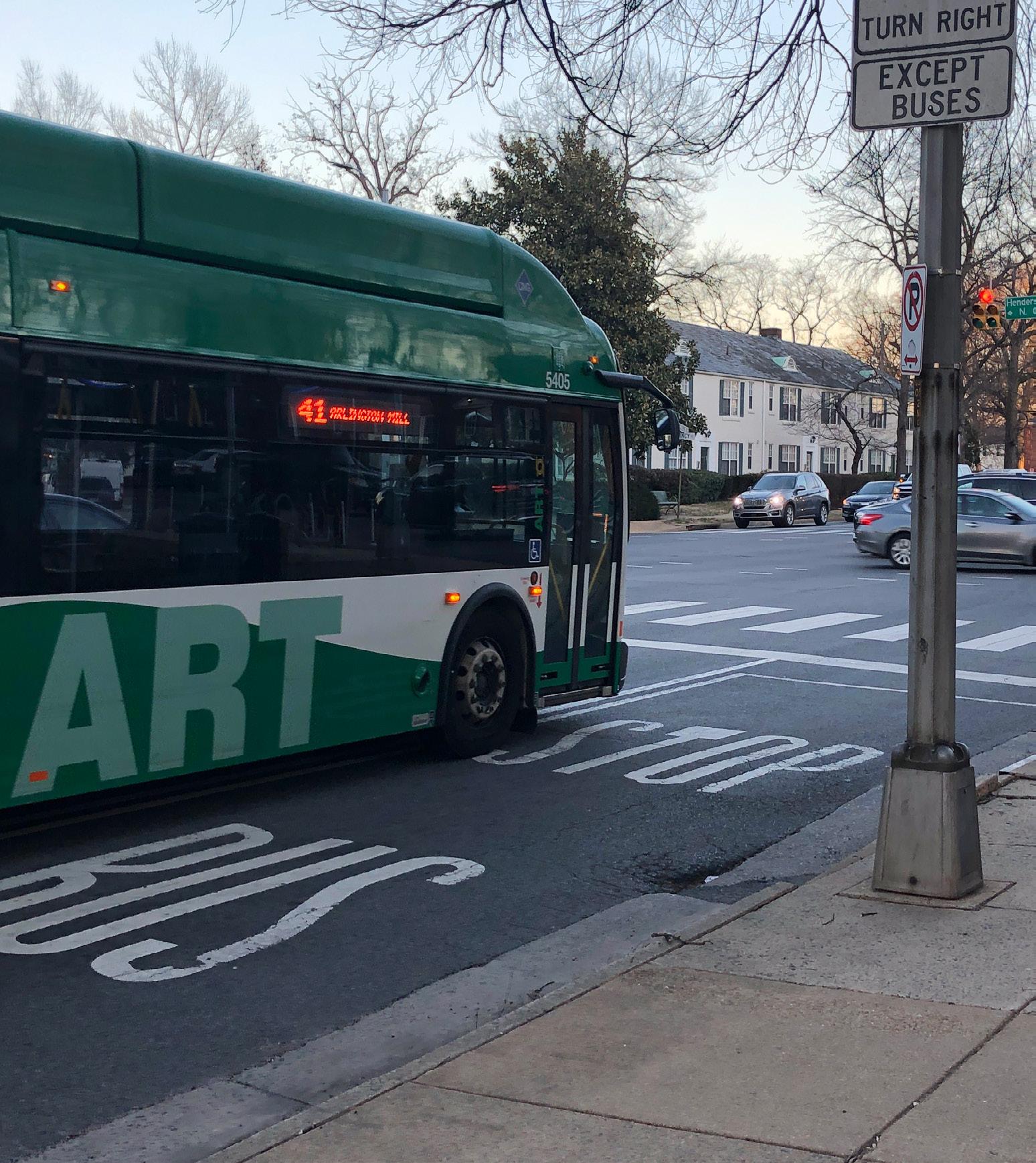







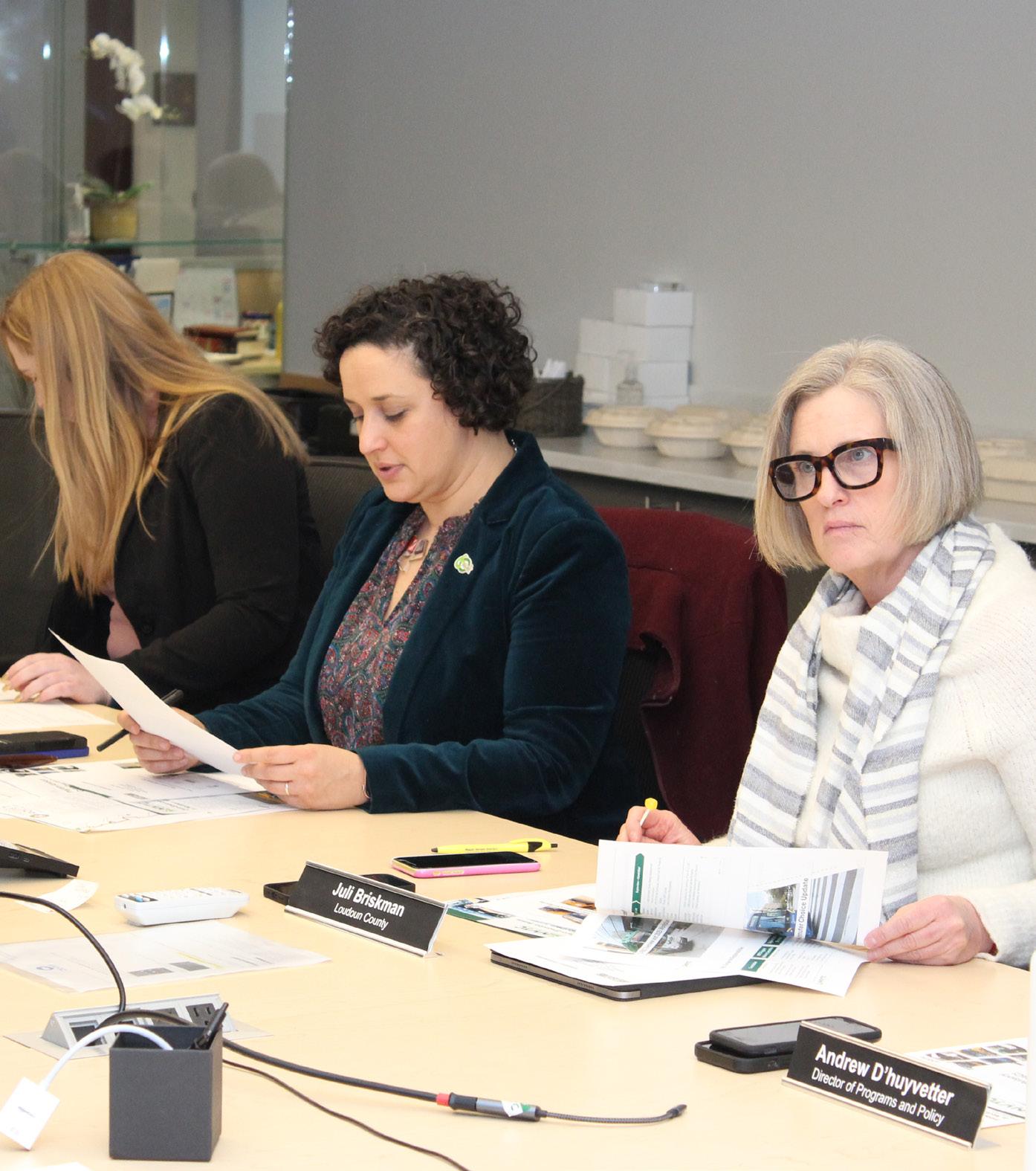

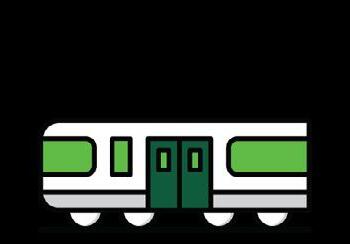


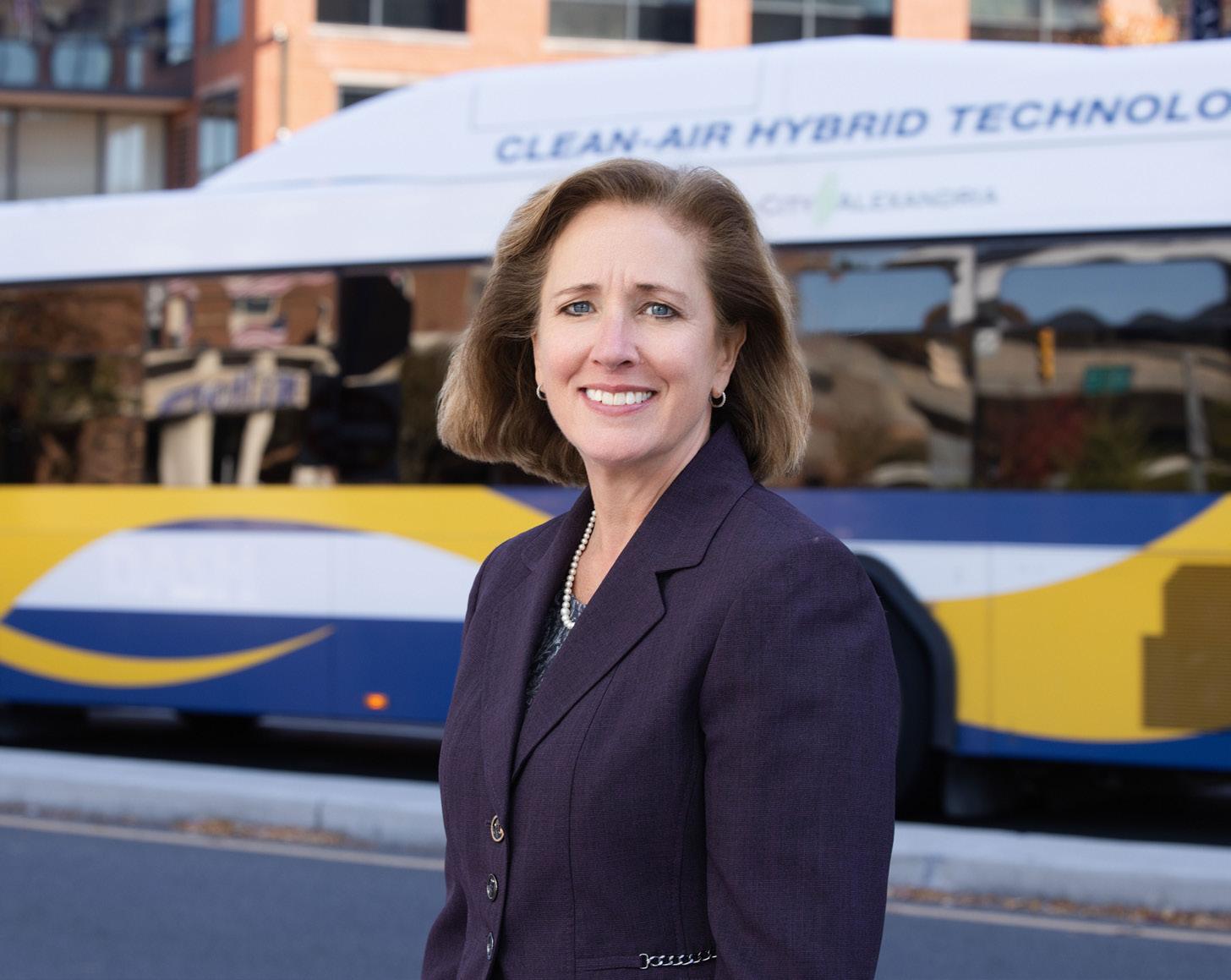

















One of my favorite topics to talk about is the large and connected public transit network we enjoy in Northern Virginia and its importance for the Greater Washington region and the Commonwealth as a whole. That said, we are always looking at ways to better understand how people use public transit and how we can improve their experiences.
That is one goal for our new micromobility report which takes a closer look at how bikes, including bike sharing, and scooters help people get to and from Metro stations. Our report finds that integrating bike parking and bike and scooter rentals at public transit stations benefits all modes. It expands the reach of transit and increases the use of bikeshare and “dockless” options. It also maps Capital Bikeshare stops near Metro stations and the use of so-called “dockless” bikes and scooters near Metro stations, showing their interdependence as complimentary modes of travel.
The micromobility report is also an example of NVTC’s ongoing work that may not get as much attention as our higher profile programs but is just as valuable to providing planners in our region with valuable information to allow them to make informed decisions.
We are also leveraging our position as a regional hub for conversations to help our local jurisdictions and their transit agencies transition to zero-emission buses. That includes examining the potential for shared infrastructure for battery electric buses to reduce costs and increase efficiency, some work that we received at no cost from the U.S. Joint Office of Energy and Transportation.
Expect to hear more about Envision Route 7 later this year, as we engage the final study phase for the planned bus rapid transit system connecting Tysons and Alexandria, by way of Seven Corners and Falls Church. This work was funded with support from Congressman Beyer and Congressman Connolly, with a match from DRPT.
I am proud that NVTC’s work continues to contribute to the economic vitality and quality of life we all want in Northern Virginia, enhancing transit accessibility, improving connectivity and supporting sustainable transportation solutions that keep our region moving forward.














NVTC submitted comments to Metro regarding the FY 2026 Proposed Budget and Capital Improvement Program that recommend continued focus on a long-term funding solution for Metro and all transit agencies in Northern Virginia, ongoing coordination regarding implementation of the 2025 Better Bus Network and urging Metro to focus its capital program on essential state-of-good-repair needs while longer term needs are refined.






Through its comments, previewed at January's Commission meeting, NVTC also showed support for advancing rail service optimization through cost savings initiatives; introducing open, or tap-and-go payment that allows riders to tap a contactless credit or debit card instead of needing a SmarTrip card; and continued efforts on mitigating bus fare evasion.
The Virginia Board members will report on recent budget changes at the March 6 Commission meeting.
NVTC's WMATA and Legislative and Policy Committees held a joint meeting February 20 and reviewed Metro’s FY 2026 budget, the 2025 General Assembly Session and NVTC’s continued work toward long-term, sustainable, dedicated funding. After a review of DMVMoves and SJ 28, the General Assembly's Northern Virginia Growing Needs of Public Transit Joint Subcommittee, NVTC Data Visualization Program Manager Sophie Spiliotopoulos presented the newly published Northern Virginia Transit Funding Guide, an interactive online tool to educate Commissioners, staff and the public on the unique ways in which Virginia funds Metro, Virginia Railway Express and local transit agencies. This guide will serve as one of several

key resources produced this year by NVTC staff to inform decision makers about the special funding considerations in Northern Virginia.
While the committees have primarily met separately in prior years, the WMATA Committee and Legislative and Policy Committee intend to meet together through the 2026 General Assembly Session to work collaboratively on the transit funding and legislative challenges facing Northern Virginia. To that end, the committees reviewed a 2025 workplan and discussed the primary ways in which the joint meetings would support the work of the Commission through the rest of the year.

















The Metro Board of Directors met February 27, and reviewed a revised FY 2026 Proposed Budget and FY 2026-2031 Capital Improvement Program (CIP). Due to stronger than anticipated ridership and revenue growth in FY 2025, Metro released its Revised FY 2026 Proposed Budget which projects a $20 million increase in passenger revenue relative to the original proposed budget. As a result, Metro anticipates using $20 million less in preventive maintenance transfers from the operating to the capital budget. The revised FY 2026-2031 Capital Improvement Program (CIP) totals just under $13 billion, up from $12.5 billion in the original proposed CIP in December, reflecting additional
funding capacity and capital investments totaling $443 million in prior year funds at the end of FY 2025 and lower operating preventive maintenance costs over the life the six-year CIP. The Metro Board is anticipated to adopt its FY 2026 budget in March.
The Board also received briefings on the 2025 Annual Transformation Report detailing progress toward the agency’s Strategic Transformation Plan goals and the FY 2025 second quarter Service Excellence Report, highlights of which include customer satisfaction remaining high, sustained ridership growth for the last 45 months and serious crimes down 40% relative to the same period last year.




NVTC's Program Advisory Committee (PAC) met February 20 to receive updates on Commuter Choice, battery electric buses (BEBs), and integrating transit, cycling and micromobility.
Program Manager Daniel Knickelbein presented an update on the I-395/95 Commuter Choice FY 2026-2027 call for projects and results of the eligibility review. PAC members were briefed on next steps for program development, including the finalizing of scores, opening of the public comment period in March and development of a draft staffrecommended Program of Projects in April.



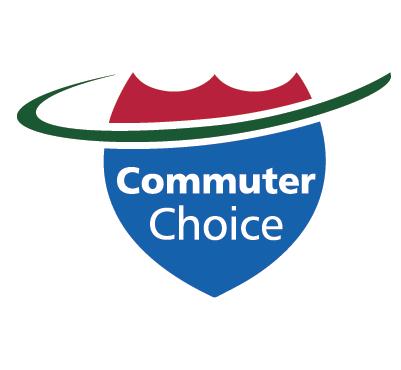
Deputy Director of Programs and Policy
Ann McGrane then provided an overview of the findings from NVTC’s Shared OnRoute Charging Feasibility Study. The purpose of this study was to evaluate whether there are layover locations used by multiple transit agencies in Northern Virginia that could provide shared onroute charging for BEBs. Ann described how the site feasibility analysis worked, what staff learned through the process and the next steps to support the regionwide transition to BEBs.
To wrap up the meeting, Senior Program Manager Xavier Harmony presented the new "Integrating Transit, Cycling and Micromobility in Northern Virginia" report. This report evaluates how these modes are integrated, considering a variety of factors including bicycle parking at transit stops, the use of bikeshare and scooter share and safe routes to transit. Xavier concluded with key findings from the study as well as a list of recommendations to help the region improve integration between transit, cycling and micromobility.
The 2025 General Assembly Session wrapped February 22 without the passage of any bills with major impacts to NVTC. We have been tracking legislation for potential consequences on transit in Northern Virginia and across the Commonwealth, while ensuring legislation is aligned with our 2025 Federal and State Legislative Agenda. Much of our legislative work this Session is laying the groundwork for 2026, when two major regional efforts that NVTC is part of, SJ 28, the General Assembly's Northern Virginia Growing Needs of Public Transit Joint Subcommittee, and DMVMoves, a regional effort with leaders from Virginia, the District of Columbia and Maryland, to develop a unified vision and sustainable funding model for public transit in the National Capital Region, wrap-up their work. This Session did include the passage of a bill we supported along with our partners at
VRE, which exempts VRE from paying taxes on surplus lines insurance.
NVTC also opposed a couple of bills that did not pass. One would have created a separate carve-out in the Commonwealth Mass Transit Fund (CMTF) for Hampton Roads Light Rail and reduced CMTF funds for Northern Virginia transit agencies. Another would have capped monthly tolls at $200 per user and could have impacted funding available for transit investments through toll revenue funding programs like Commuter Choice. We also worked with our partners at Metro to introduce a budget amendment to restore $3.3 million dollars in general funds for operating support that was the subject of a technical adjustment from the governor’s office, which reduced Metro funding in the two-year state budget. As this Session wraps up, we look ahead to the reconvened Session scheduled to begin April 2.







Executive Director Kate Mattice had the honor of guest lecturing for a class of undergraduate and graduate urban and regional planning students at George Mason University in February. It gave her the opportunity to share the work of NVTC, what our
transit network means to the region and an opportunity to look ahead to major projects like the new Long Bridge.
The students were fascinated by the regional coordination efforts needed to ensure successful regional bus rapid
transit like Route 7, and also appreciated the vast number of federal, state, regional and local entities that need to come together on major investments like the Long Bridge. The future is bright with these George Mason students.
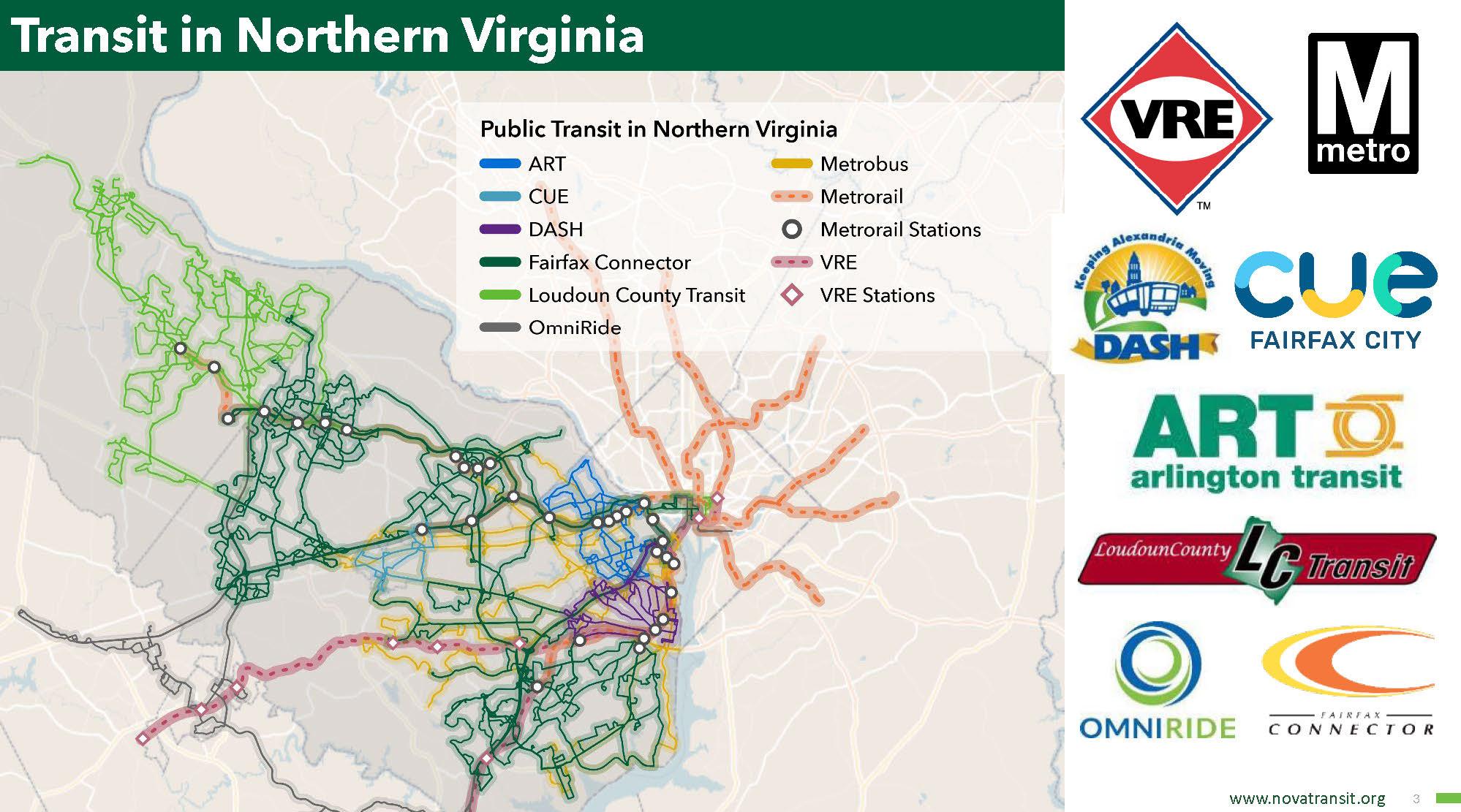



Past NVTC Chair Katie Cristol was one of the panelists for a robust discussion on transit-oriented development (TOD) in the Greater Washington region, which Executive Director Kate Mattice attended February 27. ULI Washington sponsored the event, noting that our region leads the nation in transit ridership recovery. Shyam Kannan of HDR moderated the panel which featured Katie Cristol, now of Tysons Community Alliance, Vicki Davis of Urban Atlantic and Steven Sergerlin of Amtrak. Panelists considered past and future TOD, along with innovative approaches to developing Metroowned land.




















